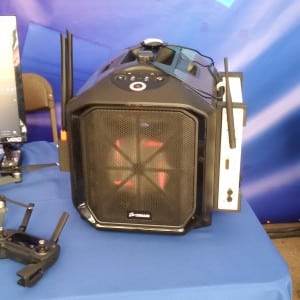
The Air Force Research Laboratory (AFRL) on May 18 unveiled two technology efforts it is working on to disrupt and capture small, hostile drones.The first system, or spiral, which has been deployed at an undisclosed location overseas for several months, is designed to precisely disrupt radiofrequency communications between a drone and its operator and push the drone away from protected areas, AFRL representatives said. It is intended to be more targeted at a threat than traditional jamming systems, which can…

 By
By 











